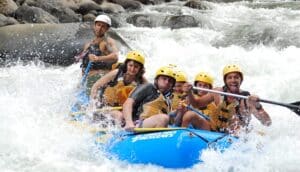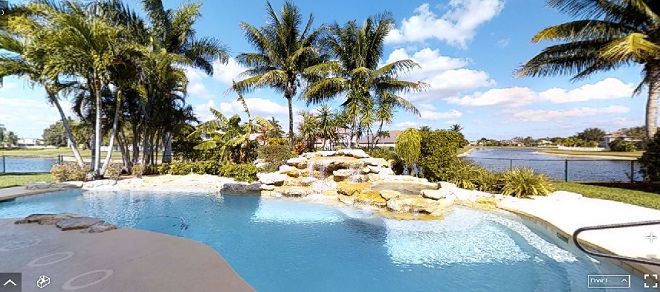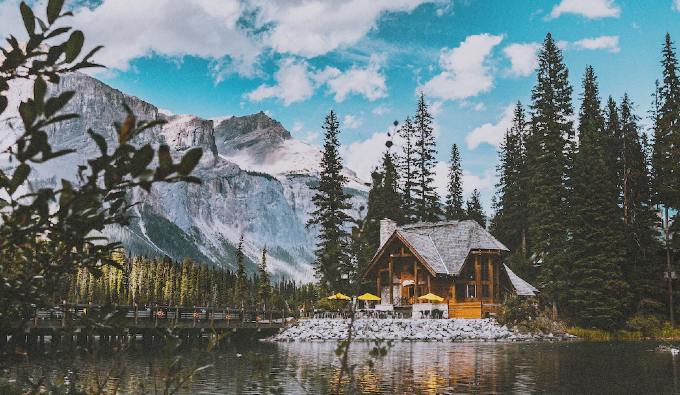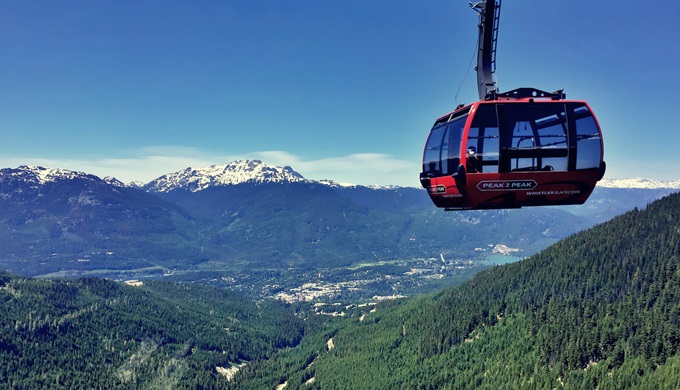Travel Content is Your Customer’s Pre-Travel Experience
Hundreds of millions of travelers will be envisioning and hoping for their own significant vacation adventures in 2024.
Isn’t the most enjoyable part of travel where people dream about destinations and how they anticipate the fun, adventure, stimulation of the journey and the destination? They’re visualizing the sights, sounds, tastes, smells and emotions of the adventure in their minds before they even think about booking a trip, cruise, hotel room, rental car, or tour with your business.
Your content is all about this pre-trip visualization and anticipation. Do the topics, words, images, descriptions, and promises make it seem like your travel package is just for them? Because that’s when their imagination really gets moving.
The Mind Enjoys First

A Canadian Chef once said about the matter of cuisine that “the eyes feast first.” It’s the exact same for travelers — the mind travels first. Travel customers want to envision the most inviting, pleasurable, and significant parts of a trip but they need help. They don’t know what’s ahead for them in Switzerland, Costa Rica, Italy, or Spain.
We get to describe the excitement of a whitewater rafting adventure, or a para sailing flight into a Swiss village, or a seaside restaurant experience on Italy’s Amalfi Coast.
And those missing visuals are your opportunity. Our content makes the trip real and inviting and we enable it with text, video and images we provide. If that vision isn’t delightful and inspiring, they’re going to book with another travel company.
Whether it’s winter or summer, there are a deluge of vacation destinations and travel packages and experiences offered up to travelers. Having great travel content and an excellent sales conversion process is essential. Having a versatile travel marketer bring it all together makes it more effective!
What Makes Great Travel Content?
Travel content marketers dive right into a frenzy of excitement and promise, but are they hitting the right notes? Because your content has to generate an authentic personalized experience to be credible. It has to speak to them in their voice. Generative AI isn’t going to cut it (in fact it will hurt your Google rankings).
Out of that total potential traveler audience, most will not visit a destination because they don’t care or know enough about it, or they may have negative beliefs or images that sour their spirit. Most of the available travel market won’t travel because of fear, loneliness, lack of relevance, affordability and weak reasons to go there. If you can speak to them personally, they’ll let you talk them into it.
These are the challenges any travel marketing company must solve to grow its clientele and customers and create bookings. Content really is about image management and intent building. When they show up on our travel company website, they’re giving us an opportunity to persuade them to book a vacation.
Well Designed Content Makes all the Difference
There are many destinations I haven’t visited and want to, but there’s always some reason not to go. But who could reassure me that I should? On occasion, I’ll come across some blogs, YouTube videos, and news articles that sway my thinking about travel and about a destination. But few are good at really making you feel like you must go there. That’s not good.
There’s a lot of layers of procrastination to peel off. Does your site do well in eliminating negative elements?

Destination info and images aren’t enough by themselves. If the travel author can package the images, headings, text content, photos and videos with stories to resonate authentic/relevant to the what travel shoppers want, they’re going to linger on that travel site or blog. The longer they engage with your content, the more of their travel buying intent is getting attached to the destination and your travel package sales pitch.
When it’s done well, the traveler becomes so enthused, they must make the trip and they’ll often share it with others on social media (if you have great sharing material, which should be mandatory for all travel agencies, tour operators and even for travel technology providers. So the material and links they share or promote on social media to friends is often the trip they want to take themselves.
Quickly Changing the Visitor’s Frame of Reference
Those posts, videos and newsclips I saw online changed my perspective and created a new frame of reference. When my frame of reference changed, I drew in more information, opened to ideas, followed a content path about the destination, tour, or hotel, and I found myself investigating it very seriously and sometimes making the trip.
You can promote yours as one of the best travel destinations or tour experiences but it’s just words until you recreate their image of it. And you have to be brief as well.
In my case, I was overcoming my reservations about travel to that place, about whether it was worth the money (financial decisions), and how risky it is in terms of safety. The world’s a scary place now.
Justifying travel isn’t easy, as there are so many claims on our time and money. So, part of the travel content strategy is to build the traveler’s sense of deserving, self-importance and purpose. Many of your readers think of themselves last which means they’ll never travel! Activating their self-esteem and self-importance is what initiates action.
Take a two-pronged strategy of drawing them to a peak experience while getting them to forget why they can’t do it. So travel content does inform, change perspectives, enliven, as well as overrides and removes barriers to travel.

And don’t forget that when they visit Airbnb, Expedia and Hotels.com for hotel room pricing, that may end the vision right there.
Enriching the Vision
And when travelers are planning a trip, what they visualize is not as rich and activating as the real experience itself. Many travel writers and videographers are excellent in portraying the destination, while others don’t feel the reader’s emotions and desires, and don’t make it really compelling. The best content has lots of relevant photos, headings, supporting points, and stories too. Storytelling is great, but it’s overvalued, because you still have to make the destination totally significant to them.
The vision can’t be general, but must be the dream of a specific audience niche that you’re creating
We’re not just informing travelers because that isn’t enough to create action. The fact is, when we’re selling travel packages, we have to get them past their prejudices, mental blocks, personal fears and other issues. Big resort websites fail when they offer up a commercial menu that appeals to no particular niche. By serving everyone, you serve no one.
Unlock New Audience Potential by Empowering Travelers
If we know the reason for their travel procrastination or know their “canned view” of cities and experiences, then we can ensure our content pieces dispel those myths and fears. We’re dream weavers and we must build the right dream that will get them past excuses, fears, and procrastination. Sure Switzerland is expensive, and yes Mexico comes with dangers, and Norway is a long way away. If we leave it to vacationers with their long-enduring attitudes, fears and beliefs, we’ll never create that new customer.
Many writers fail to deal with objections like a long jet trip, high prices, or the fear of not knowing anyone and no familiarity with it. Most travel writers simply write for returning customers and rich travelers, which is a small audience. And you won’t grow unless you can create new customers. Would you travel to a city in Bulgaria to a digital nomad resort? Well, there is such a thing. How would persuade someone to go there?
What’s conjured up in your mind about that kind of trip? And what about Mexico? Is that even relevant to you? Maybe our content can help create a significant personal connection?
Strategy for Travel Content
There are many ways to present content, but for efficiency sake, let’s summarize a process might find useful:
1. In the first two paragraphs, use an engaging title to your post, e.g., “Making your Affordable, Whistler Ultimate Mountain Biking Dream Holiday Come True.” Hook the reader with a point on how their unfulfilled need can be met “I couldn’t believe the variety of downhill and cross country trails and the magnificence of the mountains in Whistler. I had to stop frequently just to enjoy the views.”

In the second paragraph, reduce their practical resistance and excuses directly, “By staying in towns nearby, I reduced my hotel costs, and I was easily able to travel to Whistler every other day to enjoy a unique activity every time.”
2. In the next section of the article/video, provide a quick preview of the destination described perfectly for them, “Whistler Village and Bike Park are world famous for a reason. They’re part of one of the most sought after vacations on the planet. You have two ways to arrive in Canada to travel via Kelowna and enjoy traversing through the North Shore Mountains, or to Vancouver and drive the Sea to Sky highway which are fascinating trips unto themselves.”
3. The next section should very subtly touch on the affordability issue, which is tops among reasons not to go, and thus to bounces off your articles/videos. “We stayed at Lost Lake Lodge in nearby Pemberton at only $156 a night and loved the pool and hot tub. And the 360 Experience Pass gives unlimited access to Blackcomb and Whistler Mountains, for only $149!”

Then the time objection should be met with “our flight was fast and comfortable and time almost stood still as we drove through the mountains to the resort. I thought to myself that I couldn’t spend my precious time any better than I was right now.”
4. In the next section, it’s time to list a prioritized selection of amenities, experiences, and benefits of a trip to that destination. Connect top trip highlights and your storytelling in with these benefits that your target audience is most interested in, “There are endless things to do here from visiting the quaint village and some of the luxury hotels, epic mountain biking, riding the peak to peak gondola (1400 feet above the forest below), hiking the many forest trails, riding a 4×4 tour to see some bears, and more. Your days will be as full as you can humanly fill them. If you’re a food lover, the restaurants in Whistler Village will be the icing on the cake.”

5. The next section gives them essential guidance which provides a functional path to fulfill the trip, “Download our Full Whistler adventure experience guide so you can visualize what’s going to be the adventure of a lifetime.”
6. Then leave them with a friendly, warm self-empowerment message to push the decision fully into their control where they feel they deserve this special trip. “If millions of tourists are making this same trip again and again, you have full proof that this adventure is one of a kind, unique, compelling and worth every penny. There’s no better way to feel alive, decompress, and rejuvenate your soul”
7. Now your call to action gives them guidance and a decision button they might not click now, but which they can return to after they’ve built up enough intent and desire. You’re lighting a flame and extending a warm invitation, “Click here to see our Whistler, Canada Adventure Tour Packages — once in lifetime experiences for you.”
Prevent cart abandonment: Sweeten the deal as they are about to complete the purchase, to seal the deal!
And finally the push to share their emotions: “Don’t forget to share with frends on Facebook, and bookmark so you don’t forget!”
Personalized, Engaging and Most Significant
You can see now how personalized and significant your content must be to be effective. Research, creativity, imagination, the right media, and content paths all leading to your product page create the pre-travel vision they need to investigate and proceed.
Use all media channels you can to create a more multidimensional emotion creating effect. Focus on the most important emotions such as boredom, excitement, purpose, love, social esteem, self-esteem, and fulfillment.
You can package it as a product, but travel is a unique service of fulfilling dreams.
Read more on travel marketing and the power of travel management software to raise service quality, improve brand and elevate your profitability.
Travel Marketing Software | Travel Marketing Services | Improve Travel Site Conversions | SaaS Travel | Adventure Tours | Best Travel Destinations | Travel Management Software | Travel Tour Management | Staycation Ideas | Bleisure Travel | Travel Marketing | Travel Business Marketing | Marriott Hotels | Mexico Vacations | Air Canada | Air Canada Vacations | Best Travel Experiences | Lake Louise Vacation | Banff Vacations | Rocky Mountaineer Train Tours | Mountain Bike Marketing | Best Cities to Buy Property | Luxury Travel Destinations | Travel SEO Strategist

